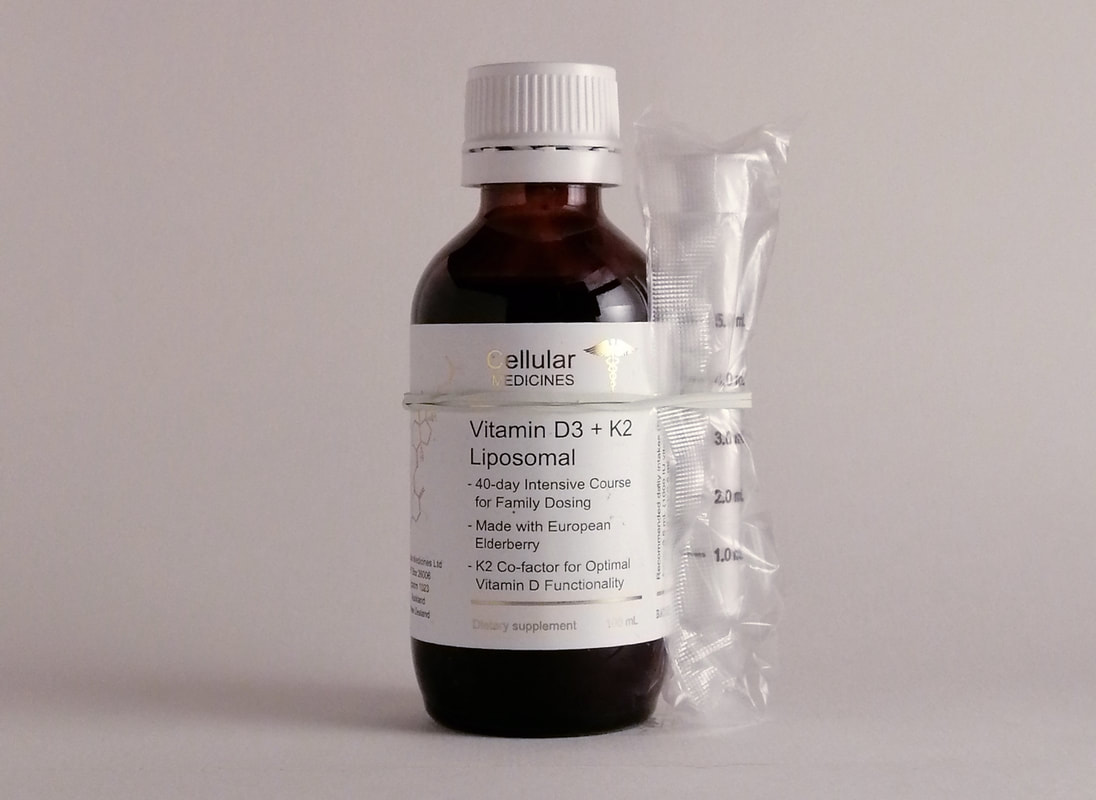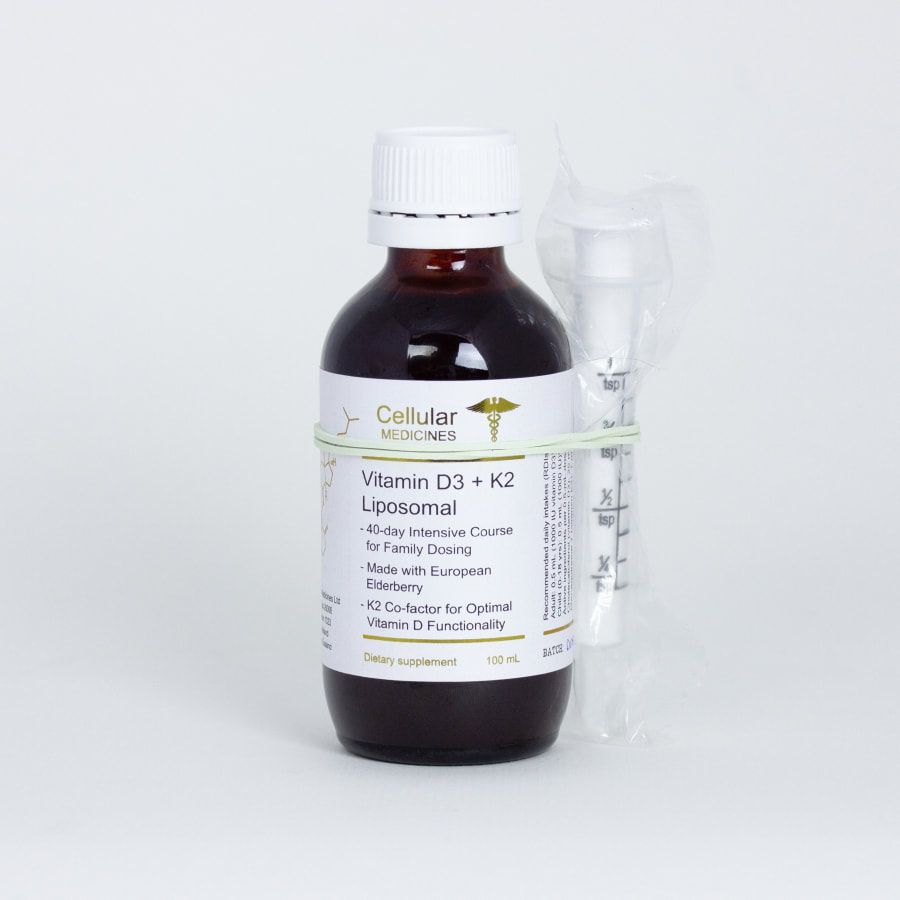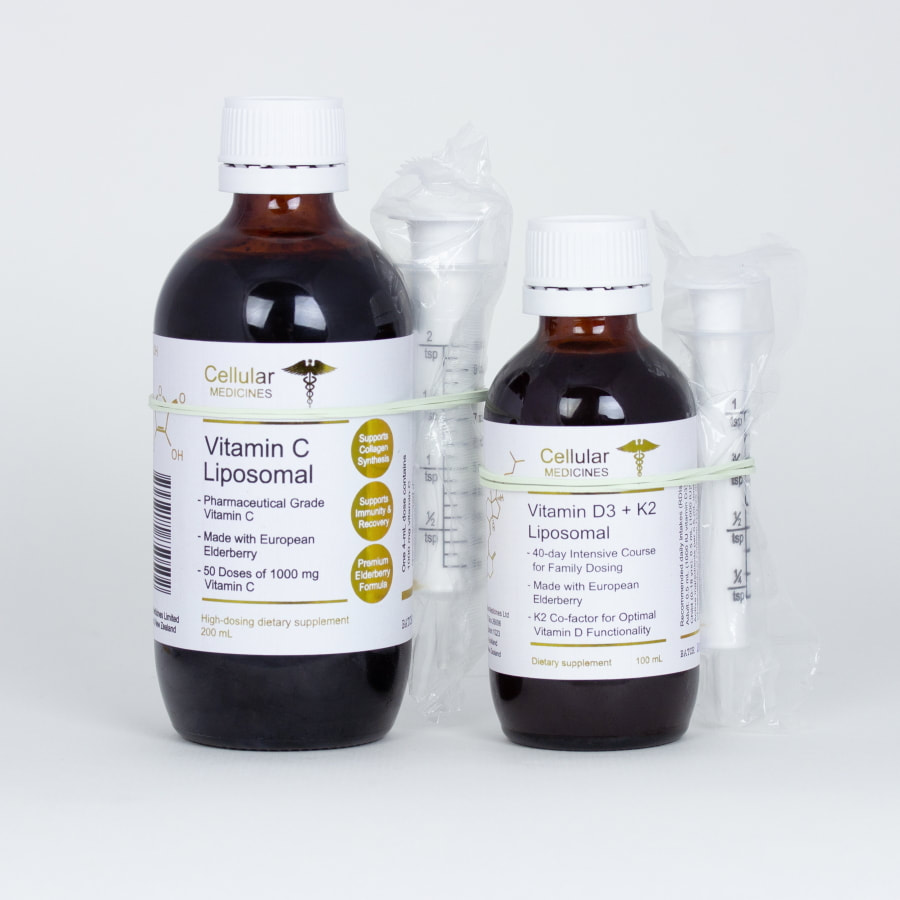Vitamin D
--If we actively avoid the sun, then we are more susceptible to a wide range of disease. Vitamin D, whether from sunlight or supplements, is crucial to the normal functioning of our physiology and genetics.--
|
Vitamin D3 + K2 Liposomal
Vitamin D3 is the nutrient most important to human health, and its deficiency is linked to weight gain, hair loss, depression, fatigue, infertility, diabetes, cancer, cardiovascular disease and dozens of other diseases. Thousands of our genes, responsible for vital physiological functions, require vitamin D to turn on and off appropriately.
The worst move in the history of human health has been avoiding the sun with no regard as to how we will suffer from reduced vitamin D levels. At Cellular Medicines, we encapsulate vitamin D in liposomes because we have found that encapsulation increases the speed and effectiveness of the body's use of vitamin D. We include vitamin K2 as a co-factor that the body requires in utilizing vitamin D. Vitamin D3 + K2 Liposomal is a premium refrigerated product made with European black elderberry and tastes wonderful. There is enough vitamin D3 in a bottle to dose the whole family. |
POWERFUL THERAPEUTICS DIRECT FROM THE MANUFACTURER. FREE POSTAGE.
We are legally required to state that vitamins and minerals are supplementary to and not a replacement for a balanced diet, which is true enough. However, it is equally important to note that a balanced diet does not provide the amounts of vitamins and minerals required for optimal health or to have a therapeutic effect. As an example, you cannot consume sufficient vitamin D through your diet, and you must take a supplement if you are not getting enough direct sunlight to create your own vitamin D. Always read the label and use as directed. Cellular Medicines Limited, Auckland, New Zealand.







